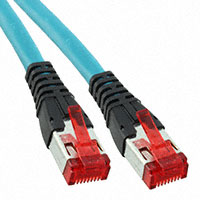NBC Series, Modular Cables
Results:
4
Manufacturer
Series
Connector Type
Number of Positions/Contacts
Length
Color
Style
Cable Type
Features
Shielding
Mounting Type
Results remaining:4
Applied Filters:
NBC
About Modular Cables
Modular cable assemblies are essential components in telecommunications applications, specifically for wired Ethernet and telephone networks. These assemblies consist of a length of appropriate cordage that is terminated with a modular connector, which is a style of interconnect product designed for easy and efficient connectivity.
There are two main classes of modular cables, categorized based on the type of cable used: flat and round cables.
Flat modular cables are commonly used in low-speed applications, such as baseband voice communications. They offer ease of termination, making them convenient for installation. However, they may sacrifice some electrical performance compared to round cables.
Round cables, on the other hand, have their inner conductors twisted together in pairs. This design enables better electrical performance, making them suitable for high-speed applications such as gigabit Ethernet. The twisting of the conductors helps reduce interference and crosstalk, improving signal integrity and transmission quality.
Modular cable assemblies provide versatility and flexibility in telecommunications networks. They allow for easy installation, reconfiguration, and maintenance, as modular connectors can be easily plugged and unplugged from devices. This modularity also allows for scalability, as additional modules can be added or removed as needed.
These cable assemblies play a crucial role in establishing reliable and efficient communication channels within networks. Whether it's transmitting voice data in telephone networks or facilitating high-speed data transfer in Ethernet networks, modular cable assemblies offer a standardized and convenient solution for telecommunications applications.


